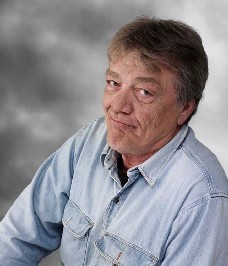Staff

How KFXM became “Tiger Radio”

In 1962, after K/MEN came in and devastated the blundering Roy Cordell regime, KFXM was a train wreck. Also in 1962, I was moved from KAFY in Bakersfield to work in Hollywood as Director of Operations for all the Tullis and Hearne stations; KAFY, KFXM,KDUO, KDEO including KWIZ, Santa Ana; and some they did not mutually own; KEAP in Fresno and KVEN in Ventura.
Howard Tullis hired John Stone from Seattle over my vehement objections. Possessing more than a reasonable amount of con in his persona, Howard was always ripe to be taken in by con artists.
Some on this vainglorious list, but certainly not all, would include Roy Cordell, John Stone, Hal Pickens, Dave Fransen, and Jeff Salgo.
Stone came in with Big Top Radio which turned out to be much more of a circus than they had imagined! [Big Top Radio had a jingle package that everyone referred to as “Woody Woodpecker” jingles rather than “Under The Bigtop” jingles.] Poor KFXM’s reputation and ratings were down the drain.

I brought in Larry Lujack for his first California job. It took me months of jawboning to coerce him into coming; and Stone only weeks to destroy his KFXM endeavor. Lujack hates everything to do with that debacle to this day.
Then comes con Dave Franzen (another Tullis override) to finish off the rest of what was left.
I was working out of my office at Sunset and Vine, next to Howard Tullis’ ad agency.
At that time Exxon was on a giant ad campaign; Put a Tiger in your Tank. There were a lot of other companies using tiger references in national ads and so tigers were a hot vogue item. Tigers were even chasing little black Sambo and turning him into butter. Tiger paw tires gripped the road and tore up the pavement. Tony, the Tiger, eating cereal. The tiger connotation had many positive adjectives; fast, sleek, powerful, colorful, exotic, dangerous…
Barry Boyd came to work at KFXM from a station in Canada that had just launched their tiger radio campaign and he had a promotional cigarette lighter they used for premiums sporting their tiger logo that looked a lot like the Exxon guy.
Howard and I and a freelance artist named Sam Katz (Katz did all the Cutty Shark ships, the Tequila girls and more) had a brainstorming session and came up with our version of a tiger. He had to be cute, friendly, and cunning with a smile. But make no mistake he was still a tiger that could bite your head off and eat you if he wanted to.
We designed “Edgrr” as our logo for everything we did including stationary, checks, copy paper, billboards, newspaper ads, business cards, billing forms, tunesheets and stickers for use by all our stations to create the cohesive tie to all the Tullis and Hearne stations into the similar family image.
When I produced the weekly Tiger Mag for two years we could not print enough of them or find enough distribution locations to keep up with the demand. Listeners would wait in line for the ‘tiger tots’ to show up on Friday delivery at the stores!!
By the way, Edgrr is the contraction from Editor and tiger growl I used in the Tiger Mag publication.
Then we tied in with a stuffed toy manufacturer from Pasadena to make us thousands of three foot Edgrrs, as well as mini tigers and tiger tails with clips to fasten them to the gas cap filler doors.
Larry Goldberg, an MGM record producer even created a record about us called A Tiger In Your Tank.
We created an identity to use as a vehicle in which to encapsulate all the other elements we were to perform. These included the music, format, jock delivery, jingles, visuals, concerts, remotes, promotions, contests; everything we needed to propel us to the success we finally enjoyed for years to come.
Finally, to top it off, we adopted our own live Bengal tiger. We took him in a barred step van to promotions, remotes, shopping malls, TV shows and sales events. There may have eventually become some other Tiger Radio stations, but only one, KFXM, remains as the only real Tiger Radio.
Back story:
By 1965, in order to really fire up KFXM’s progress, I moved to San Bernardino for better hands on operations. That really gave us the opportunity to get the momentum we needed. It wasn’t long; we got the market back and kept the lead until the aging rock and roll AM stations started to decline.
By the 80’s, Howard Tullis passed; the stations were sold, and 60 years of a once mighty juggernaut and cornerstone of broadcasting; KFXM was laid to rest.
Tullis and Hearne Radio Stations will not be forgotten for introducing Rock and Roll to millions of listeners while launching hundreds, maybe thousands of artists to fame and fortune. To this day you can hear those haunting memories on recordings, radio stations and video; even some being hummed by someone near you.
–Al Anthony